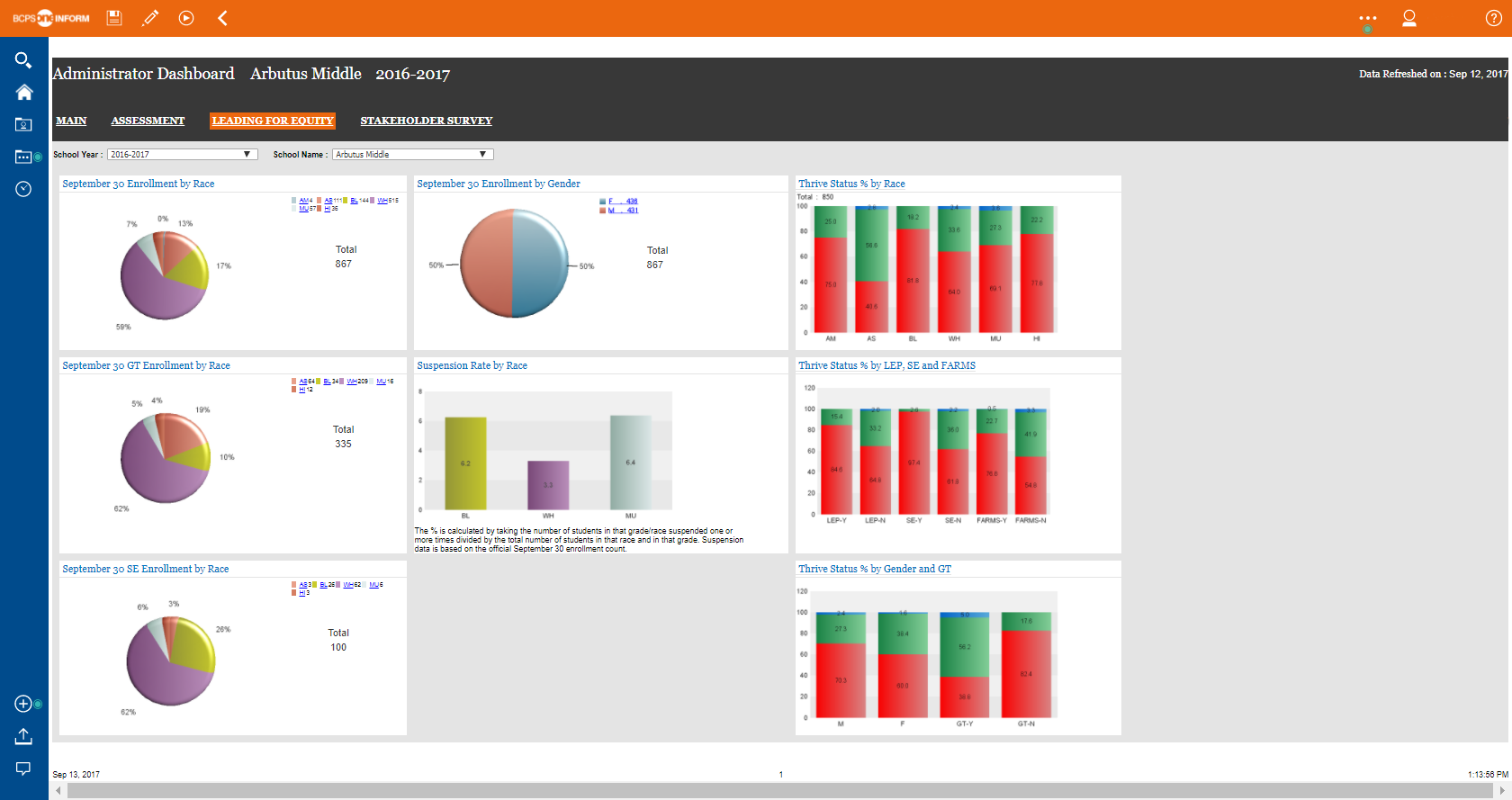Overview
Challenge: How to understand the extent to which the system is serving different groups of students differently.
Context: Baltimore County Public Schools, MD, has seen considerable change over the past 30 years as it has shifted from a primarily white district to one that is considerably more diverse. It currently serves just over 113,000 students who come from 117 different countries and speak more than 90 languages.
According to Dr. Lisa Williams, the Executive Director of the Office of Equity and Cultural Proficiency in BCPS, the district’s focus on personalizing education for students has gone hand in hand with its focus on equity and a desire to make some of its racial and demographic shifts in the district discussible. “Inequities are not just a local phenomenon,” says Dr. Williams, “they are an institutional challenge. The people who have power in organizations are the ones who have the responsibility to advocate for those who don’t have a voice. They are the ones who decide what is allowed and what is not. They are the ones who set the stage for everyone.”
Action Steps: Baltimore County has changed the way it collects and analyzes data in order to better understand the impact of the system on all its students. The district traditionally had done a yearly report on the “state of the system” that showed amalgamated statistics, such as overall student graduation rates, suspension rates, and achievement data, etc. These amalgamated data points showed continued upwards trends but masked differences in student populations.
In conjunction with its personalization efforts in its classrooms, however, BCPS began to gather student data in new ways that enabled the district to disaggregate the information based on key demographic markers, including race and socio-economic factors. Central data collection enabled district leaders to see, for example, achievement gaps that were previously hidden. This knowledge helped guide the district’s efforts to personalize learning for their students and address the inequities they saw. Steps BCPS leaders took included:
- Disaggregating all data based on race and other important demographic markers, which showed, for example, that graduation rates were lower and suspension rates were higher for Black and Latinx students
- Looking more actively at the racial breakdown of hiring data, including who the district was hiring and, more importantly, where teachers were being placed
- Conducting focus groups and interviews with students and teachers to better understand the stories behind the data that system leaders were uncovering (“You have to complicate what you think you know from the numbers,” explains Dr. Williams. “You can make up any story you want about quantitative data, but you need to talk with people to understand what’s really going on.”)
- Developing an Equity Dashboard that, for the first time, enabled schools to access and view the disaggregated data in a clear, visual way
“This all had to go hand in hand with a change in our culture” explained Dr. Williams. “Without starting at the district level first, we never would have been able to create new systems for managing and sharing data. We now share much of this data publically. It is part of what has enabled us to move away from a conversation that problematizes kids and towards an internal conversation about what we can do to support and nurture all of our students.”
Personalizing learning for students emerged directly from this work. “We either create a community that is elastic enough for all of our students or we continue to have young people and communities that get marginalized.”
Strategy Resources
White Paper: Equity of Opportunity and the Baltimore County Public School District
How BCPS uses digital curriculum to enhance and advance its equity initiative Learn More
Equity in Baltimore County Public School District
Video about BCPS from the National Alliance for Partnerships in Equity Learn More
Not Available
Baltimore County Public Schools Equity Dashboard
Screenshot of the data shown in the BCPS Equity Dashboard Learn More

Problem of Practice: Centralized vs. Decentralized Implementation
This guide unpacks the relative benefits of centralized or decentralized implementation of new instructional models... Learn More
Not Available